
Best Way to Clean Construction Dust After Home Renovation: 6-Step Guide
Cleaning construction dust can be a tedious task, but it's essential to ensure the safety of yourself and anyone else who may be working in or living in the space. In this article, EuroMaids will provide an overview of how to properly clean up construction dust and discuss strategies for keeping your workspace free from hazardous particles.
We'll also share some tips on what equipment you should have on hand to make cleanup easier and more efficient. Keep reading to learn all about how to effectively tackle those pesky construction messes!
Construction Dust Health Risks
Construction dust comes in three main forms:
Construction dust carries real and significant health risks. As it can include hazardous substances such as silica, asbestos, molds, fungi, bacteria, chemicals, and heavy metals, it can cause health problems. Long-term exposure to construction dust increases the risk of lung cancer, while construction dust particles can exacerbate chronic obstructive pulmonary disease (COPD).
Moreover, odors from concrete dust that contain volatile organic compounds may affect the health of those exposed.
Quality post-construction cleaning eliminates all the dust created during construction activity, thus improving air quality and reducing health risks.
Post-Construction Cleaning Checklist
How to clean dust after renovation? Having a cleaning checklist can ensure that the final cleaning is thorough and complete. Here are the supplies needed:
- Mop and bucket
- Powerful vacuum cleaner with high-efficiency particulate air (HEPA) filter
- Broom & dustpan
- Rags, microfiber cloths, or paper towels
- All-purpose cleaner
- Glass cleaner
- Dusting spray or furniture polish
- Ladder for reaching higher surfaces, such as ceilings or walls
- Scrub brush and sponges for tough stains
- Squeegee
- Lint roller or sticky mats for furniture
- Industrial fan to increase air circulation
- Disinfectant cleaner
- Trash bags for construction debris
- Dryer sheets to wipe down as much dust as possible
Post-Construction Cleaning PPE
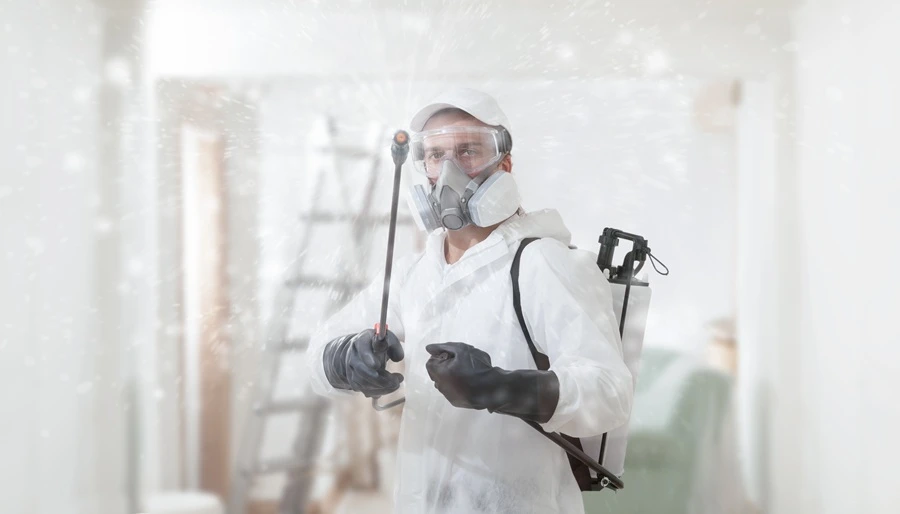
Having personal protective equipment (PPE) is part of providing a safe and successful post-construction cleaning project. Wearing the proper PPE helps protect you from potential hazards such as dust, different types of mold, and sharp materials associated with post-renovation projects. The PPE that post-construction cleaners should always be provided with includes:
- Safety glasses
- Face masks and respirators
- Work gloves
- Long-sleeved clothing
- Protective footwear
- Hard hats when necessary
This type of protective gear is vital in helping keep you safe while on the job.
Floor Cleaning Detergents
How to clean construction dust from floors? Detergents are the key to keeping any floor looking its best. Suitable for use with a wide range of modern automatic cleaning devices, these specialized detergents provide superior cleansing power while also protecting sensitive surfaces from damage or discoloration.
⚠️ Avoid harsh chemicals or abrasive cleaners that might damage freshly installed materials. When in doubt, test any cleaning solution in an inconspicuous area first.
How to Prepare for Post-Construction Cleanup
Post-renovation cleaning is a necessary step that must be taken but can often feel like an overwhelming task. Fortunately, there are a few simple steps one can take to make cleaning more manageable after a construction project.
- Make sure the construction site is completely cleared of construction garbage before starting the process.
- Clear large objects from walkways and ensure all tools are put away and out of the way.
- It is beneficial to keep in mind which specific surfaces the post-construction cleaners will need access to so that further time is not wasted.
How to Clean Construction Dust in 6 Simple Steps
There are a few simple steps you can take to ensure dust from construction work is cleaned up appropriately.
Step 1: Ventilate the Room
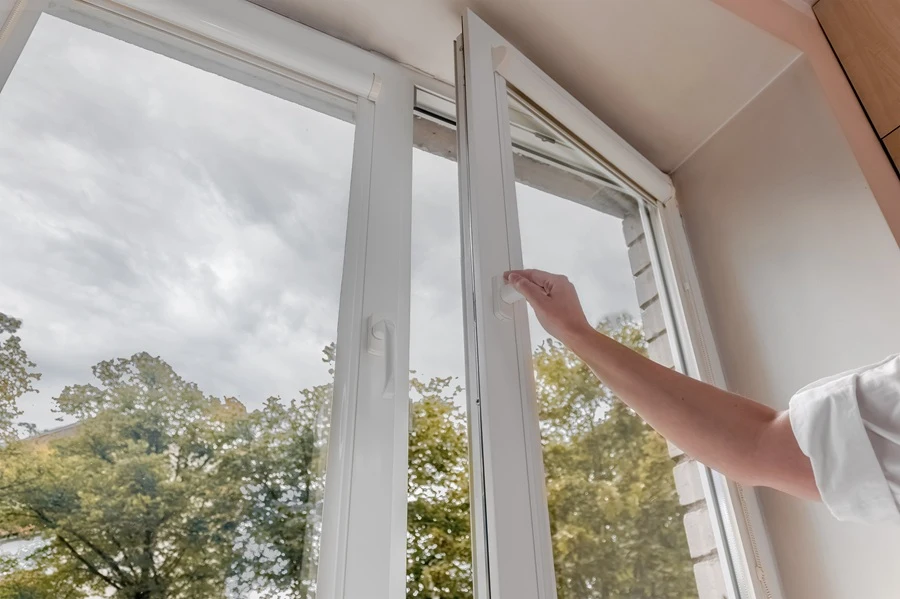
A great way to start is to ventilate the room. Open the windows to get some fresh air and use fans or dehumidifiers to clear any lingering construction dust. It's important to do this step before cleaning with cleaning products as it will help to reduce airborne contaminants and protect you from inhaling harmful particles.
If your HVAC system was running during construction, temporarily seal air vents with plastic sheeting to prevent dust from circulating through ductwork during the cleaning process. Allow 30-60 minutes of ventilation before beginning surface cleaning to blow dust away and reduce fine particles in the air.
Step 2: Rough Cleaning and Debris Removal
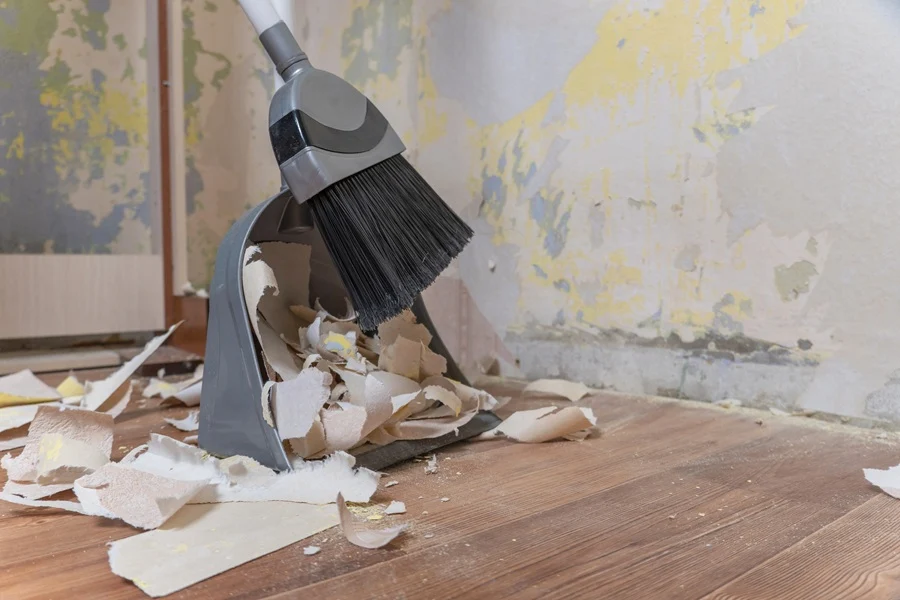
Rough cleaning with brooms and dry mops removes large debris before deep cleaning. This step is generally done with heavier, larger implements such as brooms and dry mops that are designed to sweep up large debris, dust, and dirt particles on floors and other services. Doing this simplifies the job when transitioning into the later steps of the cleaning process.
- Sweep and vacuum carpets and floors.
- Dust off surfaces such as window and door frames, and light fixtures.
- Remove stickers from glass surfaces.
- Vacuum upholstered furniture such as chairs and sofas.
Step 3: Deep Cleaning
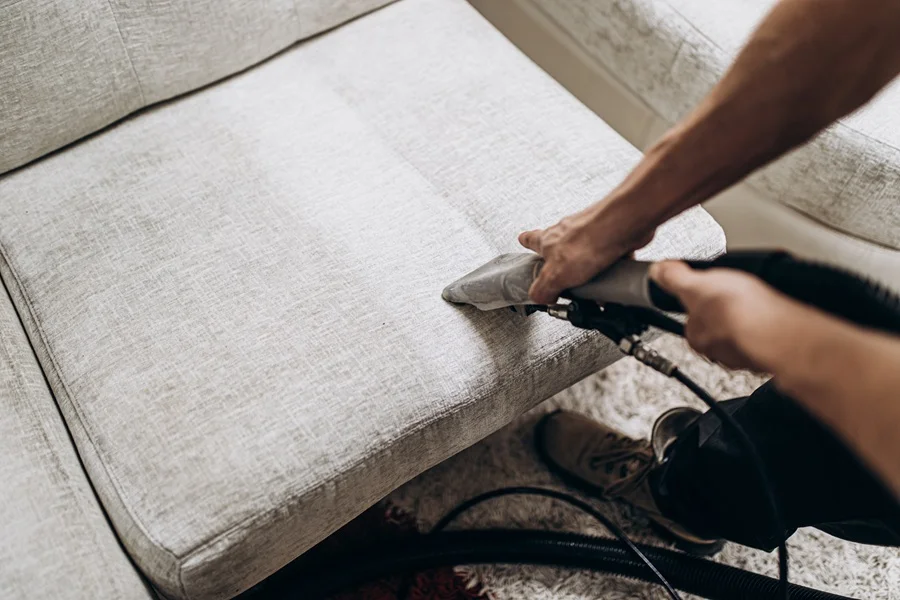
This step is all about the details. It takes time, but it's essential for a truly deep cleaning. It involves detailed scrubbing of hard-to-reach places that collect dust. This dust removal process gets all the remaining dirt from every nook and cranny:
- Wipe down all flat surfaces with a soft damp towel/cloth or mop to collect fine dust particles and debris.
- Vacuum all carpets, upholstery, and soft surfaces to remove dust particles and ensure thorough elimination of lingering dust particles.
- Wash away any dirt buildup on windows, doors, and other areas that may have been overlooked during rough cleaning.
- Disinfect hard surfaces using approved disinfectant products.
- Thoroughly clean bathrooms.
- Clean kitchen appliances.
Step 4: Touch-Up Clean

This involves making sure that any remaining dust from the construction process is rigorously removed from all surfaces, fixtures, and remaining items. An old toothbrush can also be effective in removing any particles that have seeped into small crevices. Window seals should also be given careful attention, going over them with a vacuum cleaner and then wiping them down with a damp rag.
Clean air vents and replace air filters to reduce dust spread during ventilation. Finally, if dealing with large construction dust deposits on furniture, change the filter on the vacuum's hose attachment frequently to ensure no dust builds up again within the filter bag. Following these steps will ensure your home comes out of construction looking truly immaculate.
Step 5: Mop the Ceiling
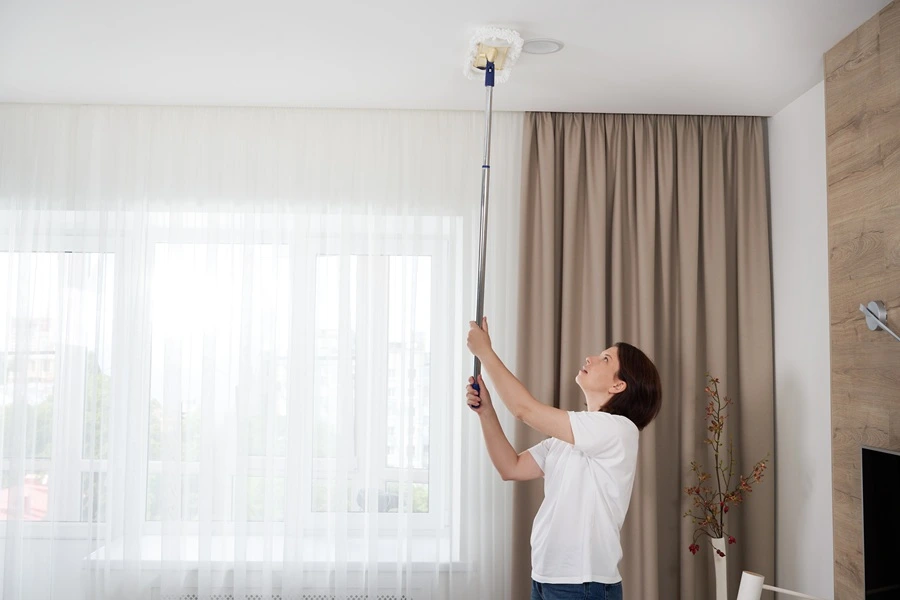
All that is required is a long-handled mop and a cleaning solution of choice. To properly get rid of dirt and debris which accumulate on ceilings, mopping the ceilings needs to be done in two directions, side to side. This ensures that all dust particles are removed and the ceiling is completely clean.
Step 6: Mop the Walls
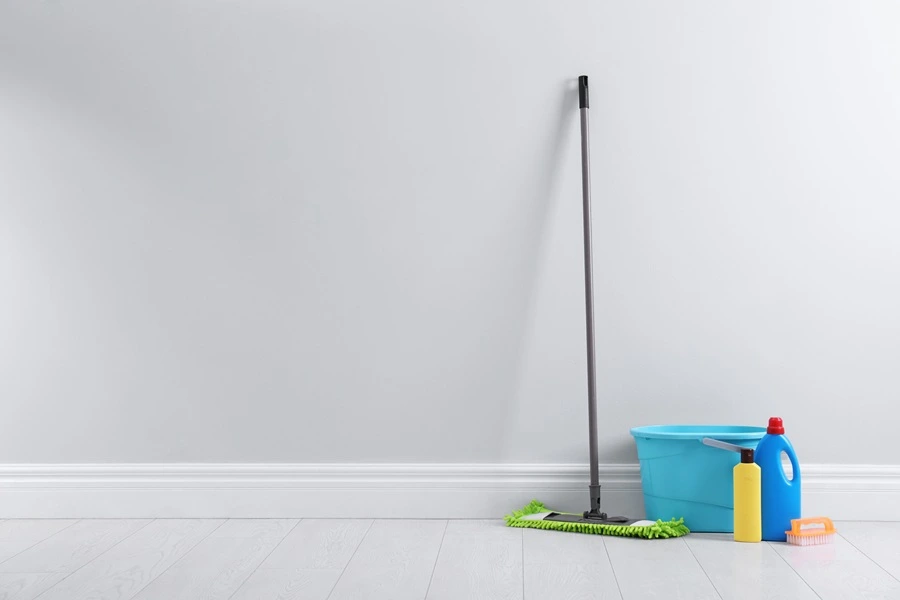
How to clean construction dust from walls? Begin with a sponge or soft-bristled brush to remove dirt from crevices. After this is completed, you can use a damp cloth and soapy water to wipe the surface down. Rinse your cloth regularly while cleaning and make sure all of the soap is removed when you're done.
Don't forget to pay attention to corners, around light switches, and other details that could trap left-over particles of dust. With enough time and care, your walls will be back in spotless condition in no time.
Focus on Specific Premises
To get the most out of house cleaning efforts, all premises must be attended to with due care and attention.
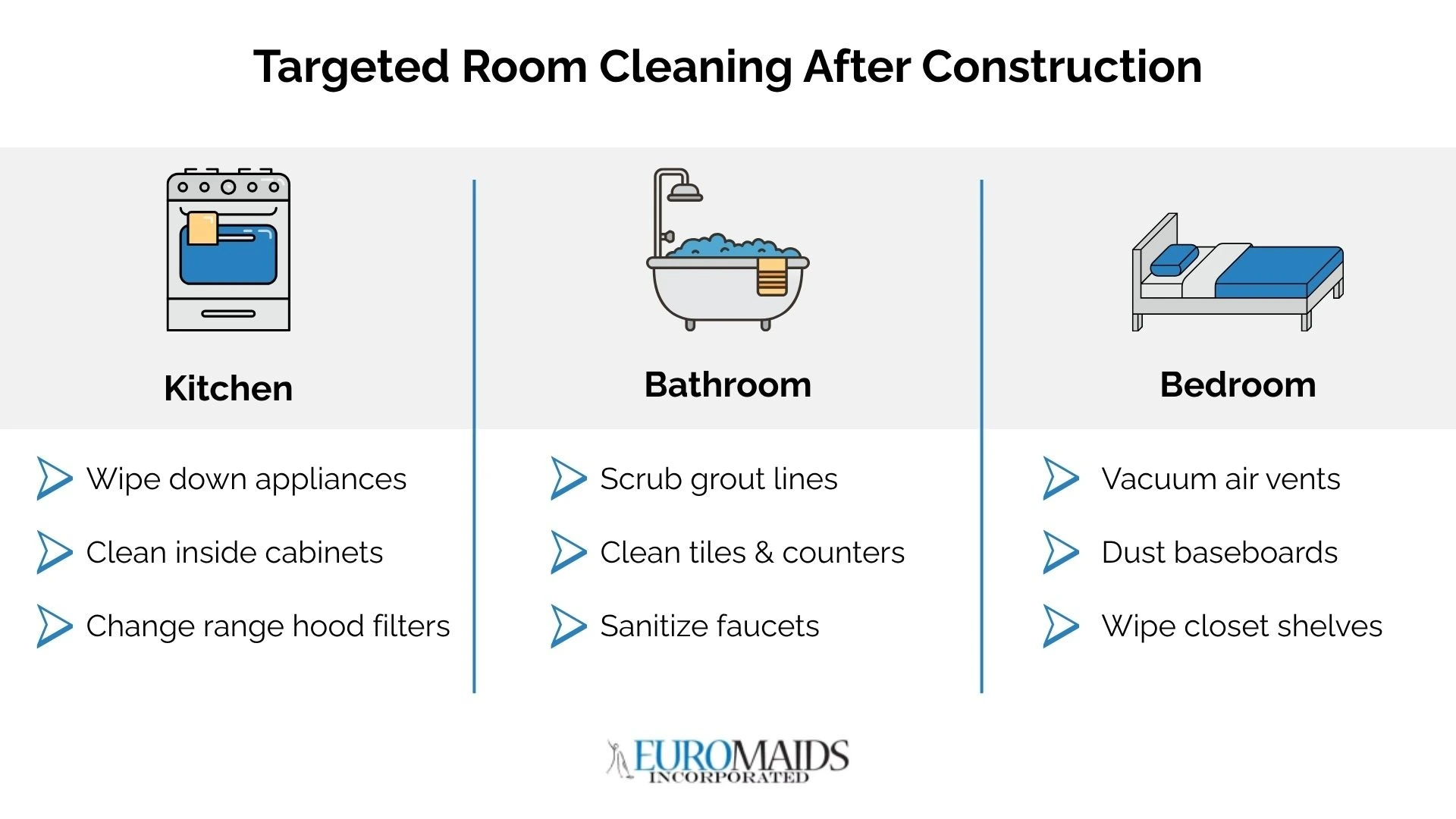
Kitchen
The kitchen is an important area of the house that requires special attention during a deep cleaning. To ensure your kitchen comes out looking immaculate, you must focus on:
- Cleaning appliances including stovetops, range hoods, ovens, and fridges.
- Wiping down the interior and exterior of the kitchen cabinet with a damp cloth or sponge.
- Changing/cleaning filters in relevant appliances.
- Vacuuming upholstered furniture items such as chairs.
- Scrubbing hard-to-reach spaces for detailed cleaning.
Bathroom
Post-construction bathroom cleaning can involve small details such as:
- Wiping down surfaces and counters.
- Wash tile floors.
- Cleaning out large areas such as faucets, sinks, and vanities.
- Or even more intensive cleaning like having grout lines power washed to look brand new.
Bedrooms
Post-construction, a bedroom should be given the utmost attention to achieve maximum cleanliness. Dusting light fixtures, grates, and air ducts are essential for completing any thorough room cleaning. To top it off, don't forget about wiping down baseboards and making sure all closets are spotless — inside and out!
Specialized Cleaning Techniques for Different Materials
Different construction materials require specific cleaning approaches to avoid damage while ensuring thorough dust removal.
#spoilers_start
Hardwood Floor Dust Removal
Before you start, it is important to vacuum or sweep wooden floors using a soft brush attachment so that all of the dust particles are removed.
Using warm water and a natural wood cleaner, mop the floor a small section at a time, using horizontal strokes and overlapping lines for each pass. For any stubborn areas or tougher spots, use a wood scraper.
Finally, rinse the floor thoroughly with clean water to ensure all residue is removed from your hardwood floors. Make sure to dry completely so the floors don't warp. Following these steps should keep your hardwood floors looking beautiful and help maintain their condition.
Drywall and Plaster Dust Management
When it comes to the best way to remove construction dust from drywall and plaster, the key is to start with the right approach. The best way to successfully clean the area is by using a vacuum cleaner with a HEPA filter attachment as well as damp mopping the surface.
For tough-to-remove spots, it is recommended to use a combination of mild detergent and water. Once all debris has been removed, the surface should be completely dried off before reassembling the furniture.
Following these steps will ensure the safe and effective removal of construction dust from either drywall or plaster.
Concrete and Stone Surface Cleaning
Concrete and stone surfaces often accumulate heavy dust deposits that require more aggressive cleaning while protecting the surface integrity.
Begin with thorough vacuuming to remove loose particles, then use pH-neutral cleaners appropriate for the specific stone or concrete type. Work in sections using clean mops and frequently changing rinse water to prevent redepositing removed dust.
For porous surfaces like natural stone, avoid acidic cleaners that can cause etching. For sealed concrete, mild detergent solutions work effectively, but ensure thorough rinsing to prevent residue buildup.
#spoilers_end
Preventing Dust Recirculation and Future Accumulation
Even thorough cleaning can fail if dust continues recirculating through HVAC systems or settling from hidden sources. Prevention strategies ensure your cleaning efforts have lasting results. Here are essential tips to prevent dust recirculation and future accumulation:
- High-efficiency air filtration: Upgrade to MERV-13 or MERV-16 air filters designed to capture construction dust particles. These EPA-rated filters trap particles as small as 0.3 microns, including fine dust particles that regular filters miss.
- HEPA vacuum maintenance: Use HEPA-filtered vacuums that trap fine particles without releasing them back into the air, ensuring effective trapping of dust and preventing recirculation.
- Continuous air circulation: Run HVAC fans continuously for the first week after cleaning to help filter remaining airborne dust and maintain proper air circulation throughout your new space.
- Regular filter changes: Replace air filters monthly during the first few months post-construction to catch any remaining particles and maintain dust-free conditions.
- Moisture control: Keep surfaces clean and dry to prevent moisture buildup that can cause dust to clump and become harder to remove during future cleaning procedures.
These prevention strategies ensure your post-construction cleaning investment delivers long-lasting results, keeping your entire house dust-free and maintaining healthy indoor air quality.
Get Professional Cleaning Help and Save Time
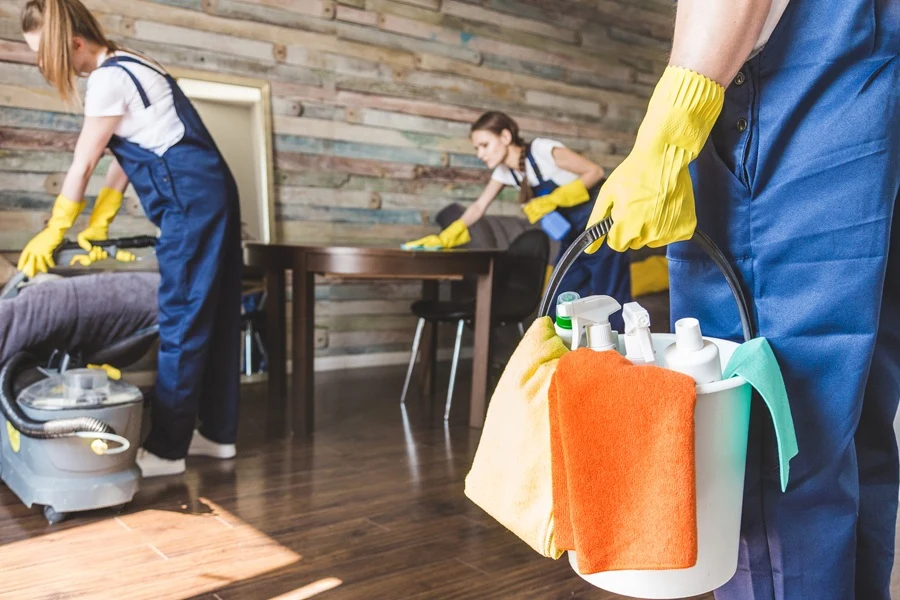
Don't hesitate to get professional help — getting expert advice and support when faced with too much dust will save considerable time and effort in getting your living space clean and back to normal again.
Ultimately, taking precautionary measures is key to avoiding breathing issues associated with inhaling construction dust in homes — so don't forget to get professional cleaning help with post-construction cleaning in Naperville, IL! Contact EuroMaids today if you require a trusted cleaning service.

Frequently Asked Questions
Related Posts
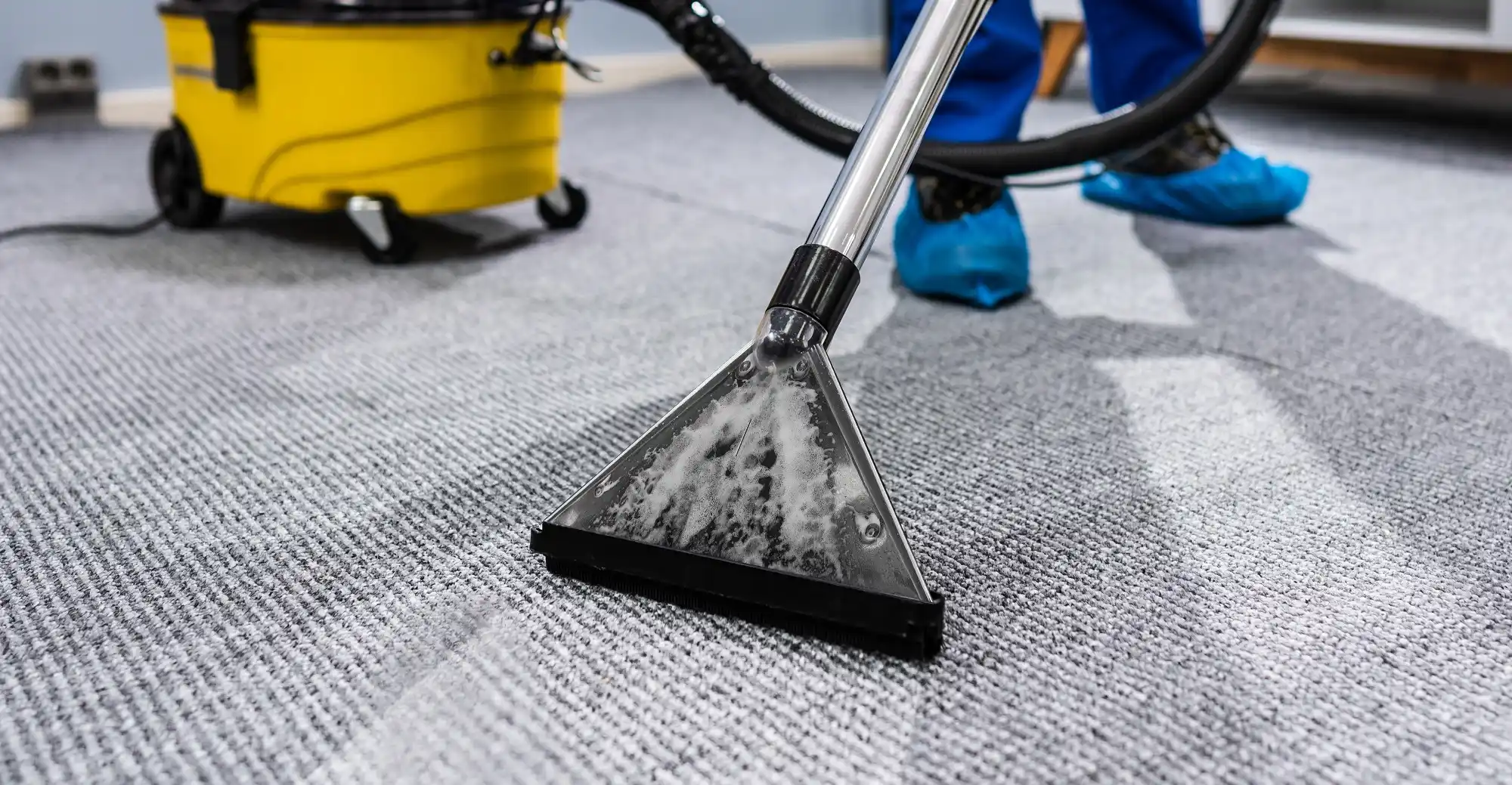
July 22, 2025
November 5, 2025
Average Carpet Cleaning Cost in Naperville, IL: 2025 Complete Guide
Wondering what the average carpet cleaning cost is in Naperville? Learn about pricing models, key cost factors, and tips to save on professional services.
Read More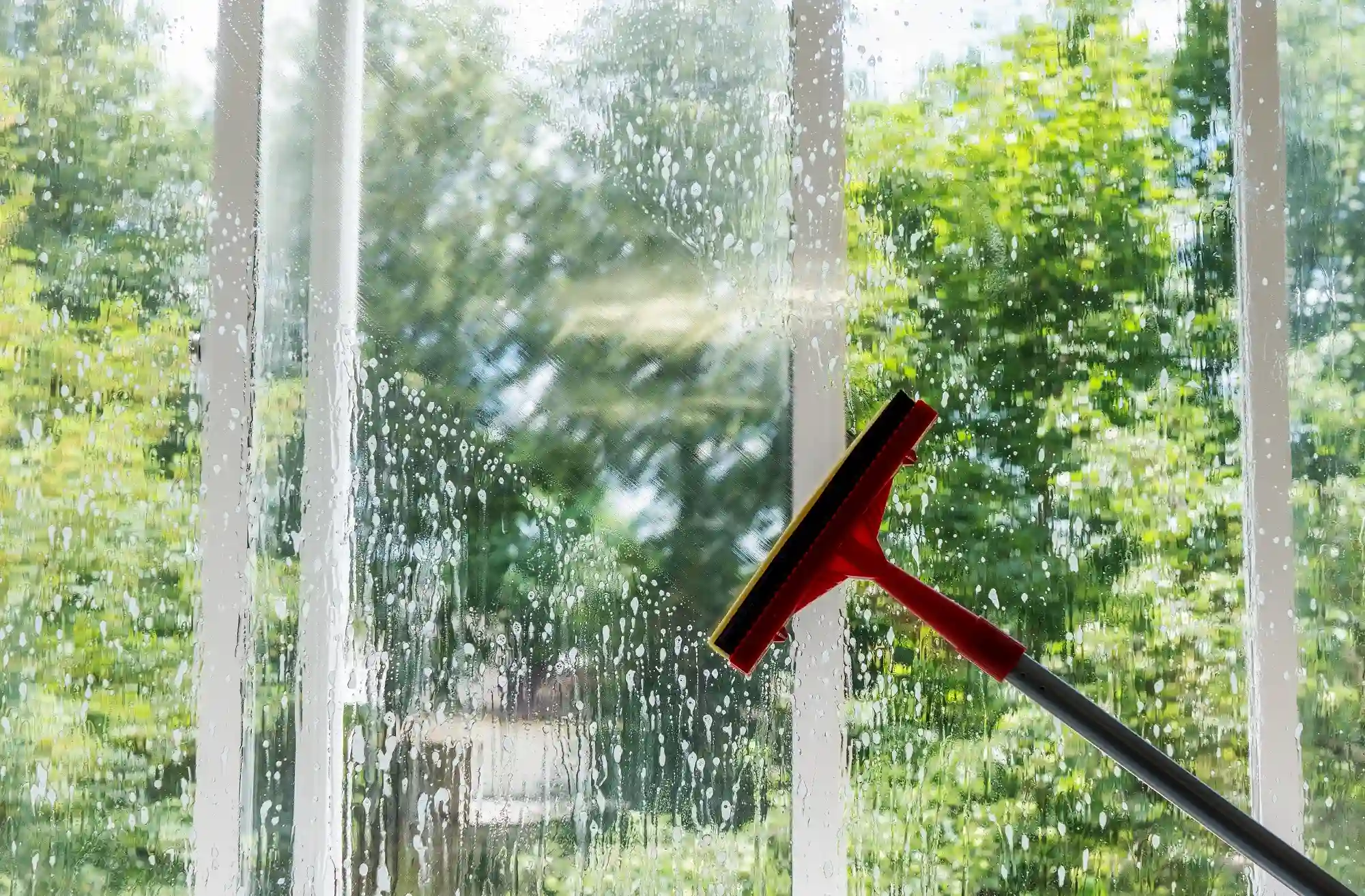
July 21, 2025
November 5, 2025
How Much Does Window Cleaning Cost in Naperville? 2025 Pricing Guide.
Ready to brighten your home? Explore the 2025 average cost of window cleaning in Naperville, key cost factors, and smart ways to save.
Read More
September 12, 2025
November 5, 2025
How to Clean a Glass Table Streak-Free and Keep It Spotless
Learn how to clean glass dining table without streaks in 5 minutes. Expert tips, supplies, and proven techniques for crystal-clear results.
Read More




